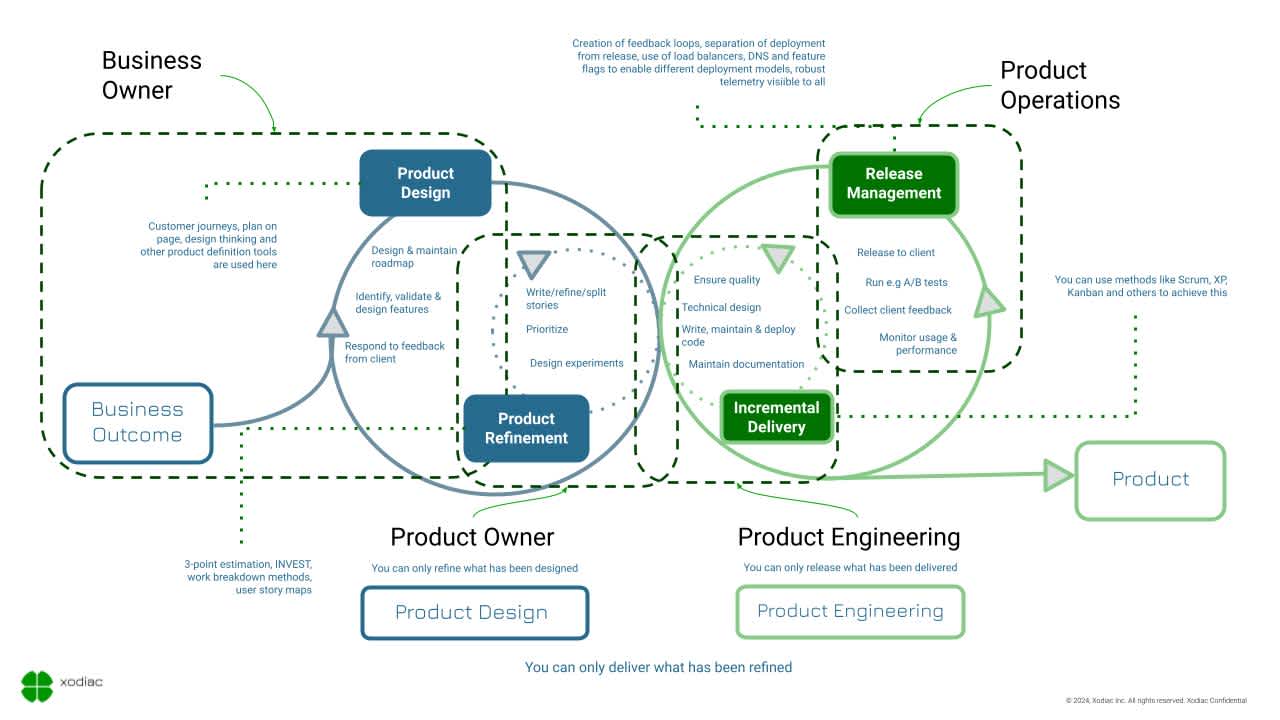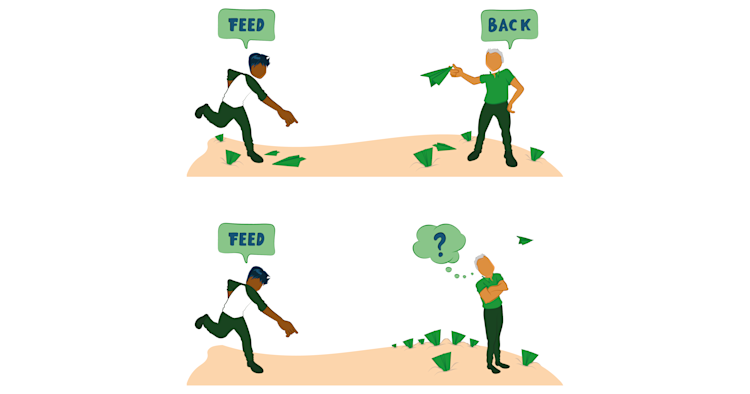Our musings
Check out our latest post

Enhancing Product Delivery Through Iterative Processes

Reading time: 5 min
Enhancing product delivery through iterative processes
The activities, tools and stakeholders involved in developing products comprise the Product Development Lifecycle (PDLC). Our customers have found the Xodiac PDLC a useful tool to explain how they deliver products and where they currently have gaps, whether in activities, tools, responsibilities or skills.
The Core Activities of PDLC
Let’s explain the key activities of the Xodiac PDLC, why each activity is necessary and how they all work together to create a dynamic learning environment.
Effective product development hinges on a well-organized sequence of activities that collectively form the PDLC. These activities are not stages; they are a strategic approach to crafting products that meet user expectations, from which businesses benefit. Their iterative nature enables continuous refinement and improvement of the final product.
The core processes are:
Product Design
It all starts with product design, in which the product's vision is con...
All articles

5 business agility benefits and 5 obstacles: Summing it all up
Reading time: 4 min
We made it! Over the past several weeks, we’ve discussed the benefits of improving business agility and the obstacles that can get in the way. What have we learned? In good business agility fashion, here is a summary of the topics we’ve covered:
Business agility practices encourage building a learning organization.
The sooner you learn from your customers, the quicker you can verify you are on the right track.
People come first as business agility is first and foremost a shift in mindset.
Without further ado, let’s dive into the benefits and obstacles and tie everything all together.

Business Agility needs resilient systems
Reading time: 3 min
Business agility helps you build resilient systems, as we’ve described in this previous article. Resiliency helps manage risks and keep systems available even under stress. In this article, we want to highlight the corollary of why business agility needs resilient systems to succeed.
If you want to learn more about what makes a system resilient, check out this article.

Business Agility needs leaders to put people first
Reading time: 3 min
As we’ve mentioned in a previous article, business agility can create a culture that increases retention and morale. While business agility can do this, it requires that leadership puts their people first. Here are three practices to help you focus on your people.

Business Agility needs customer interaction
Reading time: 4 min
Recently I was talking to one of our customers about how they feel about our services. This reminded me again of Dave and my conversation on the Definitely, Maybe Agile podcast on this very topic. Which is indeed the topic of this latest entry in our business agility series: why business agility needs customer interaction.
As we have in previous weeks, we will highlight three areas of consideration on this important topic, building on last week’s topic of business agility success depends on feedback loops.
Now we’ve known this for decades. It has been common knowledge that it is an essential skill to frequently ask your customers to guide your direction yet, perhaps in recent years it has become truly essential. We see companies that if they take their eye off the ball can find themselves becoming obsolete extremely quickly. The pace of change is only accelerating.

Business agility succeeds when you say "Not now, Maybe later"
Reading time: 4 min
Whether individually or for an organization we have a tendency to spread our focus to multiple projects at the same time. The illusion of efficiency this creates is fulfilling. After all, it is fun to start something new, we get a rush of engagement and learning. Whereas finishing a task comes with much more peril. If it is a task we enjoyed, we’ll be sorry to have finished, and if it is one we hate, we’ll want to find something else to start on. While starting a new task gives us a sense of achievement and moving forward, in fact, it slows us down.
In this week’s article on business agility, we will be exploring how confusing having lots of work underway with moving quickly. Put another way, confusing speed with focus. This is important as the sooner you can deliver value to your customers, the sooner you can learn. In turn, this prevents teams from reaping the benefits of business agility practices, such as reducing delivery costs and increasing revenue. Below we discuss three ways in...

Business agility success depends on feedback loops
Reading time: 4 min
In the first half of this series, we talked about five benefits you can get from your business agility journey. Now, as we introduced last week, we are switching topics to talk about the first of five aspects that support you in your journey or will be barriers if not overcome. In this article, we’ll be exploring feedback loops, an essential element to business agility.
Big changes come from a series of small changes. Large transformative programs are too disruptive and take too long to produce results. To see the results of your series of small changes, you need feedback loops. Without them, you won’t be able to see if you are going in the right direction and course-correct as you go.
Feedback loops inform you of what is happening in your system of work. They tell your developers the impact of their changes, inform your product team what your customers are looking for, and tell operations where to focus.
So what makes a “good” feedback loop?